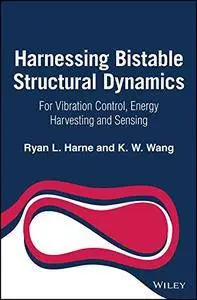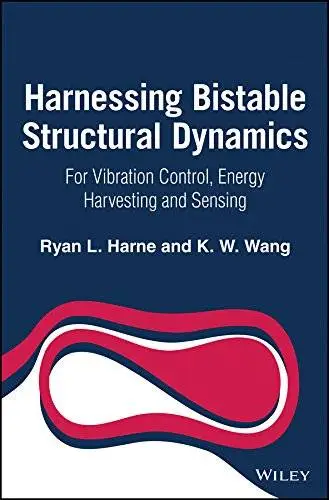Harnessing Bistable Structural Dynamics: For Vibration Control, Energy Harvesting and Sensing
Wiley | English | March 2017 | ISBN-10: 1119128048 | 408 pages | PDF | 8.74 mb
Wiley | English | March 2017 | ISBN-10: 1119128048 | 408 pages | PDF | 8.74 mb
by Ryan L. Harne (Author), Kon-Well Wang (Author)
Description
This book formulates and consolidates a coherent understanding of how harnessing the dynamics of bistable structures may enhance the technical fields of vibration control, energy harvesting, and sensing. Theoretical rigor and practical experimental insights are provided in numerous case studies. The three fields have received significant research interest in recent years, particularly in regards to the advantageous exploitation of nonlinearities. Harnessing the dynamics of bistable structures–that is, systems with two configurations of static equilibria–is a popular subset of the recent efforts. This book provides a timely consolidation of the advancements that are relevant to a large body of active researchers and engineers in these areas of understanding and leveraging nonlinearities for engineering applications.
Coverage includes:
Provides a one-source reference on how bistable system dynamics may enhance the aims of vibration control, energy harvesting, and sensing with a breadth of case studies
Includes details for comprehensive methods of analysis, numerical simulation, and experimentation that are widely useful in the assessment of the dynamics of bistable structures
Details approaches to evaluate, by analytical and numerical analysis and experiment, the influences of harmonic and random excitations, multiple degrees-of-freedom, and electromechanical coupling towards tailoring the underlying bistable system dynamics
Establishes how intelligently utilizing bistability could enable technology advances that would be useful in various industries, such as automotive engineering, aerospace systems, microsystems and microelectronics, and manufacturing
Author Information
Ryan L. Harne, The Ohio State University, USA
K.W. Wang, University of Michigan, USA



